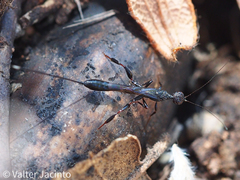Protaetia cuprea

Protaetia cuprea is a striking and fascinating species within the order Coleoptera, commonly known as beetles, and under the family Scarabaeidae. This beetle is also locally known in the Comunidad Valenciana as the "Escarabajo de las rosas" due to its frequent visitations to rose plants.
The following are key characteristics and interesting facts about this species:
- Appearance: The Protaetia cuprea boasts a metallic sheen with a coloration ranging from bronze to green, giving it a beautifully iridescent appearance. This metallic hue aids in camouflage among the foliage.
- Size: The beetle measures approximately 14-20 millimeters in length, making it a medium-sized beetle within the family of scarabs.
- Habitat: This species is widely distributed across Europe and is often found in gardens, woodlands, and areas with flowering plants, especially enjoying habitats that offer plenty of sunlight.
- Diet: As a saprophagous beetle, Protaetia cuprea primarily feeds on flower petals, nectar, and occasionally fruits. They are often seen in rose gardens, hence their local name.
- Reproduction: Reproduction typically occurs during warmer months where the females lay eggs in decaying vegetation or compost, which provides sustenance for emerging larvae.
- Ecological Role: This beetle is important in its ecosystem for pollination and recycling organic material, contributing to the decomposition process and nutrient cycling.
The presence of Protaetia cuprea in the Comunidad Valenciana enriches the region's biodiversity and highlights the intricate relationships within its natural environment.







